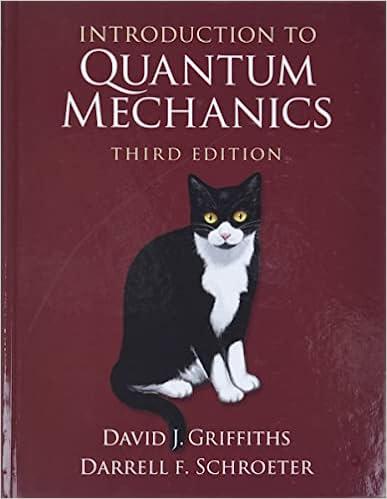(a) Suppose you could find a solution (r 1 ,r 2 , ..., r z )...
Question:
(a) Suppose you could find a solution Ψ (r1,r2, ..., rz) to the Schrödinger equation (Equation 5.37), for the Hamiltonian in Equation 5.36. Describe how you would construct from it a completely symmetric function, and a completely antisymmetric function, which also satisfy the Schrödinger equation, with the same energy. What happens to the completely antisymmetric function if Ψ (r1,r2, ..., rz) is symmetric in (say) its first two arguments (r1 ↔ r2)?
(b) By the same logic, show that a completely antisymmetric spin state for Z electrons is impossible, if Z > 2 (this generalizes Problem 5.10(a)).
Equation 5.36

Equation 5.37
![]()
Problem 5.10(a)
(a) Prove it.
![]() What does antisymmetry under 1 ↔ 2 tell you about the coefficients?
What does antisymmetry under 1 ↔ 2 tell you about the coefficients?
Step by Step Answer:

Introduction To Quantum Mechanics
ISBN: 9781107189638
3rd Edition
Authors: David J. Griffiths, Darrell F. Schroeter





